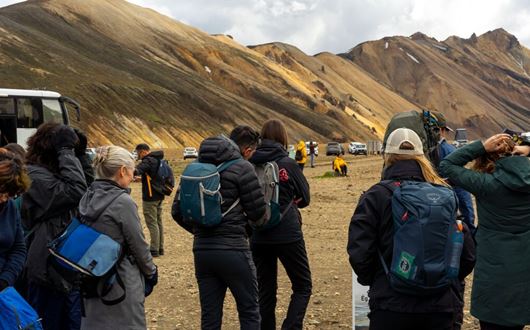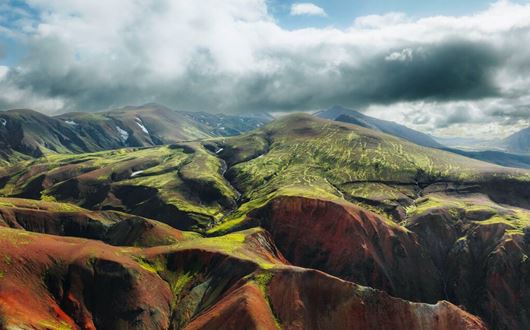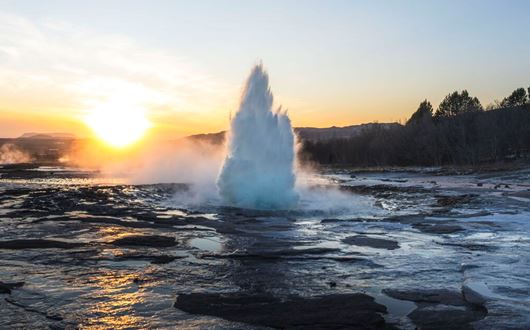Two weeks in Iceland! You might be surprised to find that, despite the small size and low population of this country, there is more than enough to do to fill 14 days in Iceland. The beauty of Iceland (besides the obvious - have you seen the views?) is that there are attractions and activities that appeal to everyone, from every walk of life.
Whether you’re a keen photographer, an adventurer, or simply someone who wants to absorb this island’s unusual beauty, you’ll have no problem staying busy in Iceland for two weeks. You’ll head back to your day-to-day life feeling refreshed, inspired, and like you got to experience the true Iceland. Here, we’ll share some of the best ways to spend your two weeks in Iceland, highlighting the best activities and locations that you won’t want to miss.
Hit the Road

In our opinion, there’s no better way to experience Iceland than to get out and explore! Using a portion of your time in Iceland to get off the beaten track and experience some of Iceland’s routes, littered with unforgettable sights and attractions, is an experience you’ll never forget. While you could spend months exploring every corner of Iceland, there are a few famous routes that will show you more than just the highlights.
The Ring Road
If you want the ultimate Icelandic road trip experience, tackling this circular route that encompasses the entire island is a great option. Starting in Reykjavík, The Ring Road, or Route 1, takes you through haunting landscapes, famous attractions, beautiful coastlines, and into the remote north before looping back to the capital.
You could quite easily spend your full two weeks just on the Ring Road, but an eight-day Iceland Ring Road tour is an ideal way to conquer Route 1 and still have plenty of time to explore other areas of Iceland. Our ultimate Iceland Ring Road itinerary can be completed in five to ten days, and allows you the freedom to customise you journey.
The Golden Circle
Another famous route you have to incorporate into your 14-day itinerary for Iceland is The Golden Circle. This is a shorter circular route, just 300 km (186 mi), that includes some of Iceland’s top sights. These include:
To enjoy this route, you can join a Golden Circle tour or simply venture out from Reykjavík and enjoy the sights over a day or two.
The Diamond Circle
Experience a different part of Iceland by exploring The Diamond Circle, the north’s answer to The Golden Circle. This circular route is 260 km (160 mi) long and covers some of northern Iceland’s most desirable locations. It’s common to begin the route in Iceland’s “northern capital,” Akureyri, and then continue onwards to take in the attractions, which include:
If venturing into some quieter parts of Iceland is a priority of yours, The Diamond Circle could be a perfect route for you. It’s also the perfect route to tack on to a Ring Road adventure since Akureyri is located along Route 1.
Hit the Beaches

Dyrholaey Beach Arch, Iceland
Even in the depths of winter, Icelandic beaches are something to behold. Imposing rock formations, uniquely colored sand, dramatic cliff lines, and powerful tides make Iceland’s beaches unusual and unforgettable. As you probably guessed, as an island, Iceland isn’t short on beautiful beaches, but we’d suggest that you work a visit to as many of these as possible into your 14 days in Iceland.
- Ytri-Tunga Beach: Just a couple of hours north of Reykjavík, you’ll find this beautiful and quiet golden sand beach against a backdrop of imposing black volcanic mountains. The beach is also home to seals, who bask on the rocks and sand.
- Dyrholaey Beach: Along Iceland’s South Coast, you’ll find sweeping North Atlantic views from this black sand beach. The beach’s white lighthouse, Dyrhólaeyjarviti, makes for picturesque views.
- Rauðisandur Beach: Nestled in the remote Westfjords is this stunning beach boasting red-gold sand. The surrounding hills make for excellent hikes offering sweeping views of Iceland’s western shoreline.
- Þingeyri Beach: Another jaw-dropping beach in the Westfjords, Þingeyri is peaceful and picturesque, with expansive stretches of black sand and deep blue waters. This spot is ideal for wildlife enthusiasts, who can glimpse whales, seals, and plentiful birdlife.
- Reynisfjara Beach: Perhaps Iceland’s most famous beach, Reynisfjara is known for its towering rock formations, black sand, and the fact that it's incredibly dangerous. While not suitable for swimming due to dangerous currents, it’s an ideal location for exploring and snapping photos.
- Diamond Beach: Like many of Iceland’s beaches, Diamond Beach is known for its black sand. What makes this beach unusual is that chunks of ice, which have broken off of icebergs at nearby Jökulsárlón Glacier Lagoon, wash up on shore and glisten in the sunlight.
For more recommendations, read our guide to the top beaches in Iceland.
Explore the Glaciers

Vatnajökull Glacier in Iceland
Did you know Iceland is home to 269 glaciers which cover 11% of the island’s land mass? That’s a lot of ice. This surplus of ice makes for a great deal of adventure, from snowmobiling to hiking and even riding a Super Jeep to the entrance of an ice cave, Iceland’s glacier tours provide endless intrigue and fun. Some of Iceland’s most well-known glaciers include:
- Vatnajökull: Iceland’s largest and oldest glacier. It’s also the largest glacier in all of Europe. Vatnajökull is located in southeastern Iceland.
- Eyjafjallajökull: One of Iceland’s most famous glaciers, due to the volcano beneath the surface of the ice with the same name. It infamously erupted in 2010, causing major global air traffic disruption. Eyjafjallajökull is located in southern Iceland.
- Langjökull: Iceland’s second-largest glacier and one that offers a wealth of tours and adventuring opportunities, notably the amazing ice caves. Langjökull is located in Iceland’s Highlands.
No two-week visit to Iceland would be complete without some form of glacier adventure, so make sure you don’t miss the opportunity to experience one!
See the National Parks

Almannagjá Gorge, Þingvellir National Park in Iceland
Iceland boasts three majestic national parks, all of which pay tribute to the country’s natural beauty. Including a visit to one (or all) of Iceland’s national parks as part of your 14-day itinerary allows you to connect with the wilderness and the wildlife, all whilst offering some fantastic camping and hiking opportunities.
- Þingvellir National Park: Less than an hour from Reykjavík, Þingvellir is a must-visit. Visitors can learn about Iceland’s ancient Parliament which met within the park’s legendary Althing, or visit the Silfra Fissure and snorkel or scuba dive between two tectonic plates in unbelievably clear waters.
- Snæfellsjökull National Park: Located on the western tip of the bewilderingly beautiful Snæfellsnes Peninsula is this captivating park. Home to unusual caves, intriguing rock formations, and the Snæfellsjökull Glacier, Snæfellsjökull National Park is not to be missed.
- Vatnajökull National Park: Home to the famous glacier of the same name, Vatnajökull also hosts several of Iceland’s other beautiful attractions. Here you will also find Diamond Beach and Jökulsárlón Glacier Lagoon, as well as Crystal Ice Cave and much more. When it was established, this park absorbed two others; Jökulsárgljúfur National Park and Skaftafell National Park. Skaftafell is now a famous nature reserve, known for extensive plant and birdlife, as well as many hiking and walking trails.
Experience the Cuisine

Two weeks in Iceland will allow you to really immerse yourself in the local culture. This includes food! Don’t be shy - take the opportunity to try some authentic Icelandic food. While some dishes, like fermented shark (Hákarl), dried fish (Harðfiskur), and sheep’s head (Svið) might put you off - they’re definitely worth a try and offer you a glimpse into the history of Iceland.
Some foods that you’ll probably be very eager to enjoy include:
- Seafood: As an island, Iceland has incredible access to fresh and delicious seafood.
- Hotdogs: Believe it or not, Icelanders love hotdogs. The most popular place to try one is Bæjarins Beztu Pylsur in Reykjavík, which famously served former US President, Bill Clinton.
- Ice cream: Despite the cold weather, Icelanders also love ice cream. Reykjavík in particular offers many ice cream parlours, any of which will offer you a delicious treat. Make sure to try Bragðarefur, a blend of ice cream and toppings (similar to a Blizzard from Dairy Queen or a McFlurry from McDonald’s - only much better).
Two weeks in Iceland is the perfect amount of time - it allows you the freedom to explore without feeling rushed. If you’re unsure if spending two weeks is right for you, find out more about how long to spend in Iceland.





















